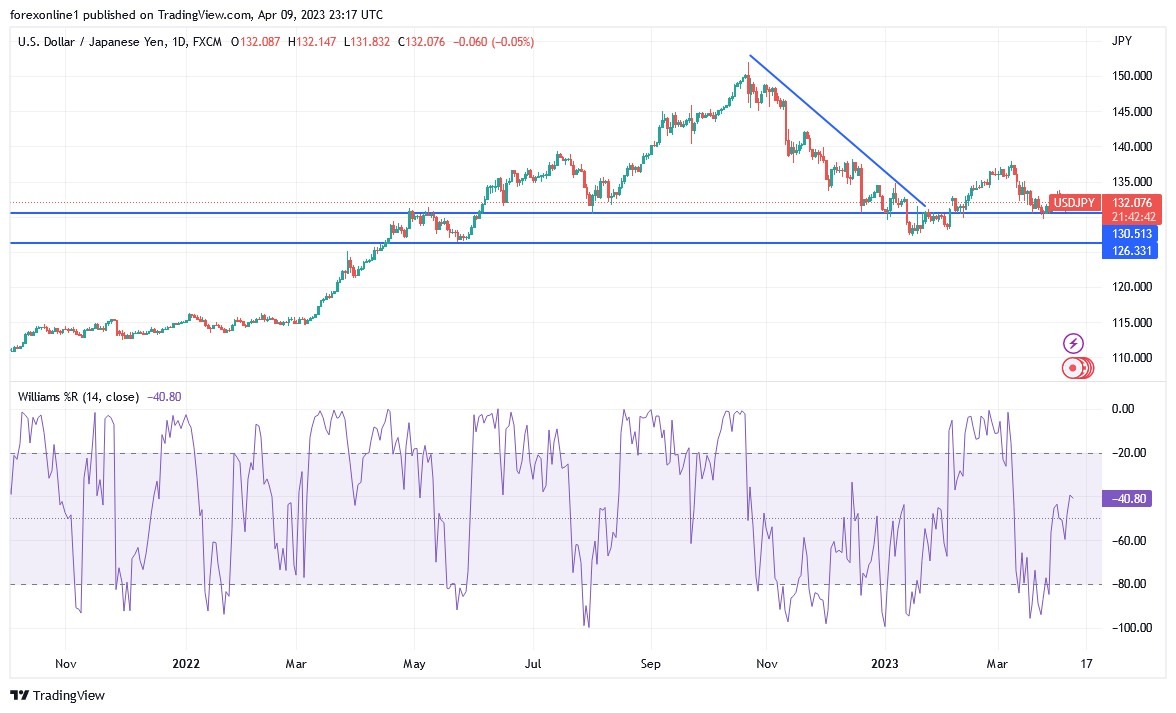[ad_1]
The US dollar posted some gains for the week in Good Friday trade after non-farm payrolls figures cast the US labor market in a resilient light. It also confirmed the continued slowdown in employment growth while revealing job losses in some parts of the economy. Accordingly, the USD/JPY currency pair had a good opportunity to rebound to the 132.38 resistance level, and closed trading around the 132.17 level. Its losses in the same week affected the 130.62 support level.
Overall, the greenback was broadly but briefly bought after the Bureau of Labor Statistics said that US Non-Farm Payrolls rose by 236,000 in March, down from an upwardly revised 326K in February but above the consensus. So says Brent Donnelly, CEO at Spectra Markets and a veteran trader who has spent his career between hedge funds and global banks such as Lehman Brothers and HSBC. “My point is the jobs report is almost 100% noise. Preliminary claims, JOLTS, and all private data point to more flexibility in the future for the US labor market. And I bet the NFP will catch on at some point.”
Economists were on average looking to see an increase of just 228k, but the better-than-expected March result still yielded gains below the average of 334k in the past six months while the report’s breakdown revealed job losses in a small number of sectors. Borrowing costs implied by federal funds rate futures rose on Friday, but the March payroll numbers, and other data released recently led some economists to warn that nonfarm payroll growth could drop to at least 50,000 over the next two months.
For his part, Ian Shepherdson, chief economist at Pantheon Macroeconomics, says: “The data for February and March shows that the sudden rise in private payrolls in January by 353 thousand was purely fluke, due to exceptionally mild winter weather and low snowfall in most parts of the country.” And “the trend in the last six months or so has been around 200,000. And that is about to change, given the apparent rise in unemployment claims and lower employment intentions in the NFIB survey.”
Friday’s report indicated that warehousing industries shed about 12,000 jobs last month, adding to a growing slew of losses seen in businesses involved in retail, building materials, garden equipment, home furnishings and home electronics, among other things. Job losses across those last sectors of the economy totaled 33,000 in March, and they point to some success on the part of the Fed in its efforts to reduce inflation by easing a “tight” labor market where higher wages are often said to drive increases in corporate prices.
Also Friday, the Bureau of Labor Statistics said average hourly earnings grew 4.2% in the year to March, down from 4.6% in the year to the end of February. US PCE inflation remained above the 2% target even after falling to 5% in February, despite uncertainty about how high the Fed’s interest rate has been since the Silicon Valley bank failure in March. This and its aftermath led to Fed policymakers leaving interest rate projections unchanged in March, which would mean only one increase in the federal funds rate for the year, while market rates for interest rates suggest that investors and traders are skeptical that such an increase will be necessary.
- The Japanese Yen is entering a new era with the departure of Haruhiko Kuroda as Governor of the Bank of Japan.
- Accordingly, the USD/JPY pair traded around 132 on Friday, which was a few pips above this week’s low at 130.70.
- The biggest news for the Japanese yen is the end of Haruhiko Kuroda’s tenure as the Bank of Japan.
- This is important because Kuroda has been one of the most important governors of the Bank of Japan for decades.
In his tenure, the Bank of Japan has consistently left interest rates in negative territory in an effort to stimulate inflation. In addition, the bank implemented a large-scale quantitative easing (QE) program that boosted its balance sheet to more than $8 trillion. Japan’s GDP is less than $5 trillion.
To a large extent, the Bank of Japan was unable to meet its inflation target. And while the core CPI moved above 2%, analysts believe it will return lower when energy prices stabilize in the coming months. Economic growth in Japan was also disappointing as the country lost market share to some Asian countries. Despite massive money printing, GDP has fallen from more than $6 trillion in 2011 to $4.9 trillion.
Therefore, some analysts believe that the new BOJ governor will continue Kuroda’s policies for some time and then start to tighten.
The 4-hour chart shows that the USD/JPY exchange rate has been in a downtrend after peaking at 137.93 on March 8th. It fell 4.5% from the highest point in March. The pair is still slightly below the 50-period moving average and is just above the 38.2% Fibonacci retracement level. Therefore, the outlook for USD/JPY is bearish, with the next reference level to watch at 129.70, the lowest point of March 24th. The bulls need to move towards MS TUI resistance 134.90 to confirm control of the trend.
Ready to trade our daily Forex forecast? Here’s a list of some of the best Forex trading platforms to check out.

[ad_2]
